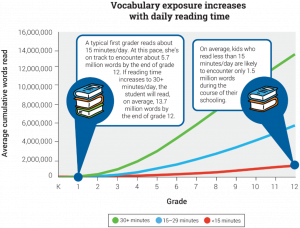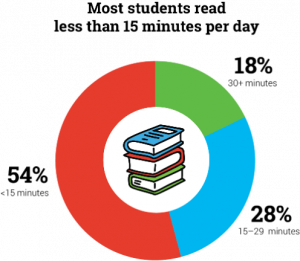June 20, 2022
As increasing numbers of children become technology-literate before they are literate, how can you get a child to choose a book over a computer screen?
Over the last three decades, global reading rates have dramatically declined.
According to a 2012 survey, the vast majority of 9-year-olds reported reading for pleasure at least once every week in 1984, with nearly half reporting to have read almost every day. However, by 2012, only a quarter of all 9-year-olds reported that they had read for pleasure, and if they did, it was occurring, on average, less than 25 days per year!

So, what affect does the decline in reading for pleasure really have on students? Although reading for pleasure has many benefits, one of the biggest is exposure to vocabulary. When we think about vocabulary, the difference between students who read more than 30 minutes per day and those who read less than 15 minutes per day is astronomical – in fact, it is the equivalent of 12 MILLION WORDS. To further prove the point that the more a student reads for pleasure, the more they learn, children who read between 15 and 29 minutes per day will encounter approximately 5.7 million words. This is less than half of the high-reading minutes group but nearly four times that of the low-reading minutes group.
So, what are we as educators to do, when reading practice is so clearly connected to both vocabulary exposure and reading achievement, but not enough
students are actively choosing to read?

The answer seems clear. We need to make reading practice a top priority for all students in all schools. Making reading practice a system-wide objective may be one of the most important things we can do for our students’ long-term outcomes, especially when we combine it with high-quality instruction and effective reading curricula. It is time to put as much focus on reading practice as we do on school culture, student-educator relationships, and socioeconomic factors.
If you want to know more, download our research-driven guide to the most essential aspects of high-quality reading practice designed especially for administrators, school principals, and other education leaders.
https://www.renaissance.com.au/guide-to-reading-growth-download/
